The perfect home for your protein research
PEDS (Protein Engineering, Design, and Selection) publishes high-quality research and review articles relevant to the engineering, design, and selection of proteins. Rapid time to first decision, no page charges, and visibility of papers are just a few reasons why PEDS is the perfect home for your research.
Latest Special Collections & Issues
Special Collection: Enzyme Engineering
Protein Engineering, Design and Selection is pleased to publish a special collection of articles on enzyme engineering, a dynamic and interdisciplinary research field that aims to harness the potential of nature’s catalysts by optimizing their performance for a wide range of applications. In this special collection, you will explore the latest developments, strategies, and achievements in enzyme manipulation.
High-Impact Research Collection
Explore a collection of the most read and most cited articles making an impact in PEDS published within the past two years. This collection will be continuously updated with the journal's leading articles so be sure to revisit periodically to see what is being read and cited.
Special Collections & Issues from PEDS
In addition to its regular issues, Protein Engineering, Design and Selection publishes Special Collections and Special Issues comprising of reviews and articles centered on various topics within the field of proteins.
View the full list of current and previous collections and issues
Article Types

Methods
PEDS Methods papers describe at least one method or approach that is of broad interest to the field. They should include sufficient technical information to be followed by those in the field not previously familiar with it.
Reviews
Our Reviews inform readers of the state-of-the-art in different areas of the discipline, providing a critical view or a historical perspective.

Short Communications
Short communications in PEDS can announce new and focused research findings, useful computer software and its uses, and the announcement of novel protocols.

PEDS Webinars
Watch recordings from all eight PEDS Protein Engineering and Design Webinars, providing updates on the latest developments from leading researchers sharing the future of the field.

Email alerts
Register to receive email alerts as soon as new content from PEDS is published online.

Read and Publish deals
Authors interested in publishing in PEDS may be able to publish their paper Open Access using funds available through their institution’s agreement with OUP.
Committee on Publication Ethics (COPE)
This journal is a member of and subscribes to the principles of the Committee on Publication Ethics (COPE)

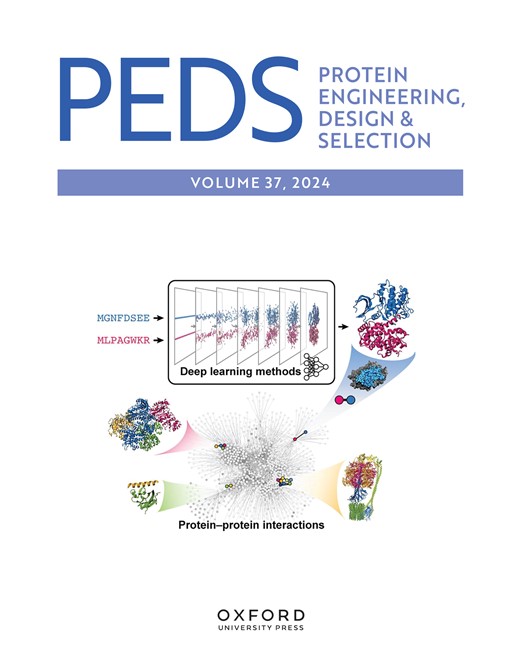
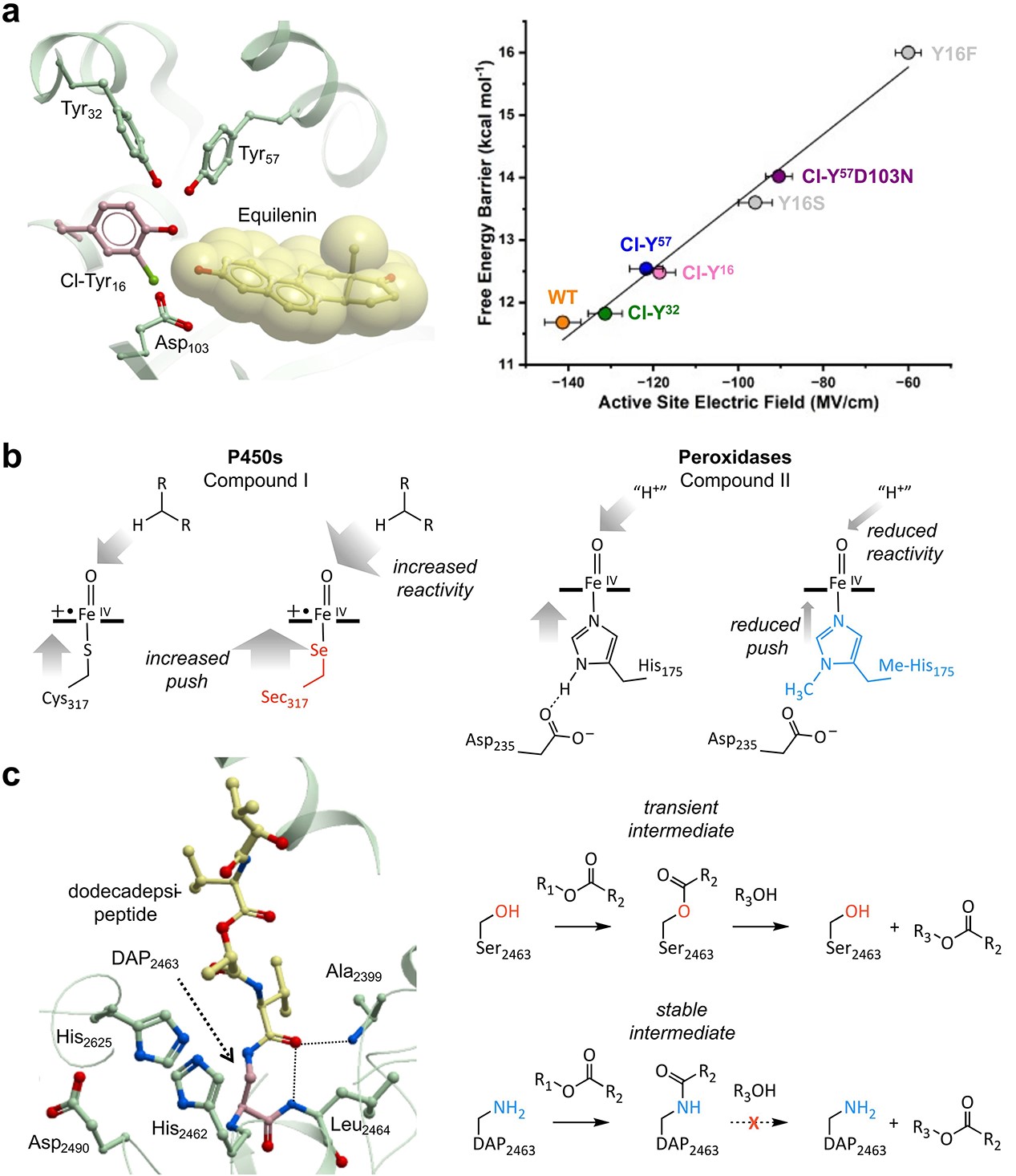 Enzyme design and engineering strategies are typically constrained by the limited size of nature’s genetic alphabet, comprised of only 20 canonical amino acids. In recent years, site-selective incorporation of non-canonical amino acids (ncAAs) via an expanded genetic code has emerged as a powerful means of inserting new ...
Enzyme design and engineering strategies are typically constrained by the limited size of nature’s genetic alphabet, comprised of only 20 canonical amino acids. In recent years, site-selective incorporation of non-canonical amino acids (ncAAs) via an expanded genetic code has emerged as a powerful means of inserting new ...
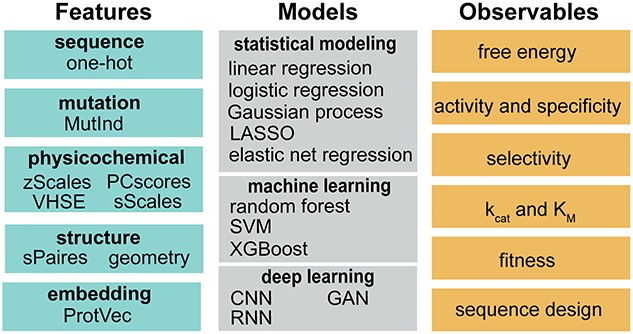 Identifying function-enhancing enzyme variants is a ‘holy grail’ challenge in protein science because it will allow researchers to expand the biocatalytic toolbox for late-stage functionalization of drug-like molecules, environmental degradation of plastics and other pollutants, and medical treatment of food allergies. ...
Identifying function-enhancing enzyme variants is a ‘holy grail’ challenge in protein science because it will allow researchers to expand the biocatalytic toolbox for late-stage functionalization of drug-like molecules, environmental degradation of plastics and other pollutants, and medical treatment of food allergies. ...
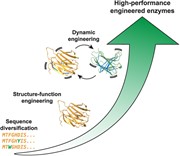 Enzyme engineering has become a widely adopted practice in research labs and industry. In parallel, the past decades have seen tremendous strides in characterizing the dynamics of proteins, using a growing array of methodologies. Importantly, links have been established between the dynamics of proteins and their function. ...
Enzyme engineering has become a widely adopted practice in research labs and industry. In parallel, the past decades have seen tremendous strides in characterizing the dynamics of proteins, using a growing array of methodologies. Importantly, links have been established between the dynamics of proteins and their function. ...
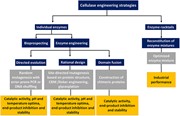 Lignocellulosic biomass is a renewable source of energy, chemicals and materials. Many applications of this resource require the depolymerization of one or more of its polymeric constituents. Efficient enzymatic depolymerization of cellulose to glucose by cellulases and accessory enzymes such as lytic polysaccharide ...
Lignocellulosic biomass is a renewable source of energy, chemicals and materials. Many applications of this resource require the depolymerization of one or more of its polymeric constituents. Efficient enzymatic depolymerization of cellulose to glucose by cellulases and accessory enzymes such as lytic polysaccharide ...
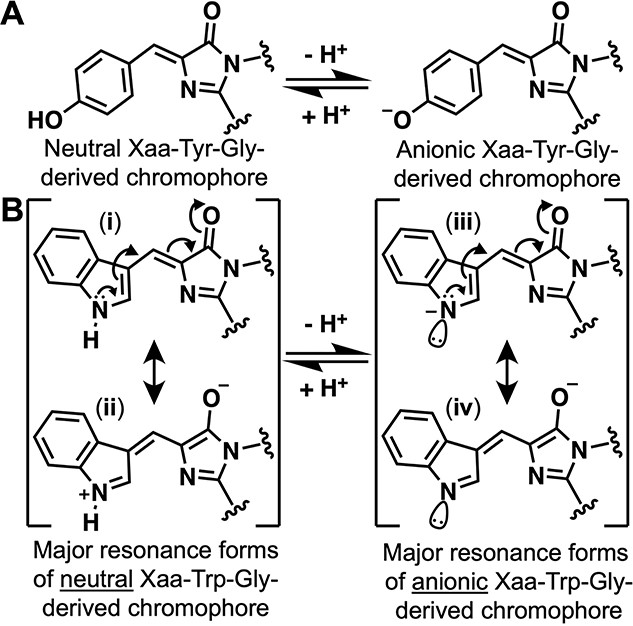 mNeonGreen, an engineered green fluorescent protein (GFP) derived from lancelet, is one of the most brightly fluorescent homologs of Aequorea victoria jellyfish GFP (avGFP) yet reported. In this work, we investigated whether this bright fluorescence might be retained in homologs of mNeonGreen with modified chromophore ...
mNeonGreen, an engineered green fluorescent protein (GFP) derived from lancelet, is one of the most brightly fluorescent homologs of Aequorea victoria jellyfish GFP (avGFP) yet reported. In this work, we investigated whether this bright fluorescence might be retained in homologs of mNeonGreen with modified chromophore ...
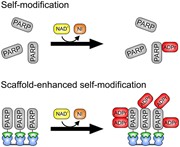 Human mono-ADP-ribosylating PARP enzymes have been linked to several clinically relevant processes and many of these PARPs have been suggested as potential drug targets. Despite recent advances in the field, efforts to discover inhibitors have been hindered by the lack of tools to rapidly screen for high potency compounds ...
Human mono-ADP-ribosylating PARP enzymes have been linked to several clinically relevant processes and many of these PARPs have been suggested as potential drug targets. Despite recent advances in the field, efforts to discover inhibitors have been hindered by the lack of tools to rapidly screen for high potency compounds ...
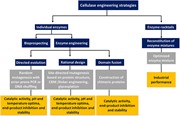 Lignocellulosic biomass is a renewable source of energy, chemicals and materials. Many applications of this resource require the depolymerization of one or more of its polymeric constituents. Efficient enzymatic depolymerization of cellulose to glucose by cellulases and accessory enzymes such as ...
Lignocellulosic biomass is a renewable source of energy, chemicals and materials. Many applications of this resource require the depolymerization of one or more of its polymeric constituents. Efficient enzymatic depolymerization of cellulose to glucose by cellulases and accessory enzymes such as ...
 Biocatalysis has become a powerful alternative for green chemistry. Expanding the range of amino acids used in protein biosynthesis can improve industrially appealing properties such as enantioselectivity, activity and stability. This review will specifically delve into the thermal stability ...
Biocatalysis has become a powerful alternative for green chemistry. Expanding the range of amino acids used in protein biosynthesis can improve industrially appealing properties such as enantioselectivity, activity and stability. This review will specifically delve into the thermal stability ...
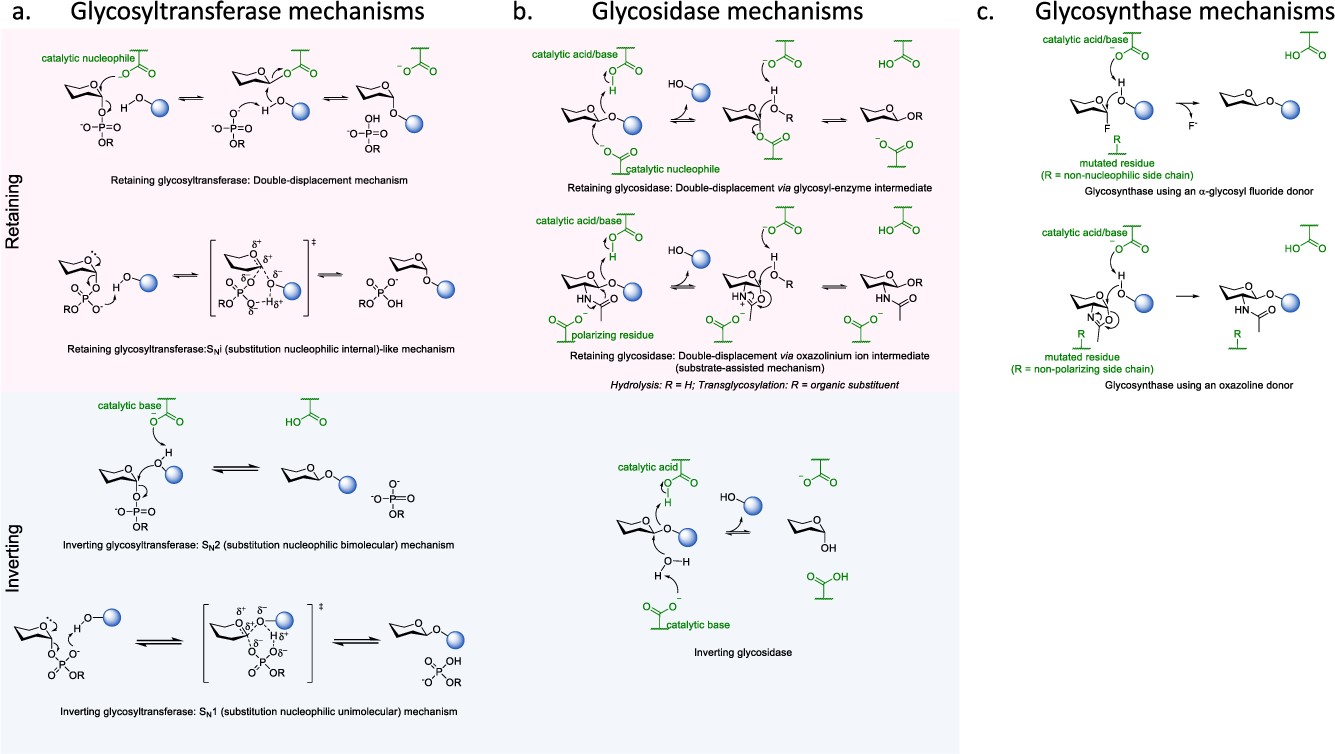 Many glycosylated small molecule natural products and glycoprotein biologics are important in a broad range of therapeutic and industrial applications. The sugar moieties that decorate these compounds often show a profound impact on their biological functions, thus biocatalytic methods for ...
Many glycosylated small molecule natural products and glycoprotein biologics are important in a broad range of therapeutic and industrial applications. The sugar moieties that decorate these compounds often show a profound impact on their biological functions, thus biocatalytic methods for ...
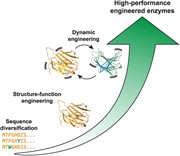 Enzyme engineering has become a widely adopted practice in research labs and industry. In parallel, the past decades have seen tremendous strides in characterizing the dynamics of proteins, using a growing array of methodologies. Importantly, links have been established between the dynamics of ...
Enzyme engineering has become a widely adopted practice in research labs and industry. In parallel, the past decades have seen tremendous strides in characterizing the dynamics of proteins, using a growing array of methodologies. Importantly, links have been established between the dynamics of ...
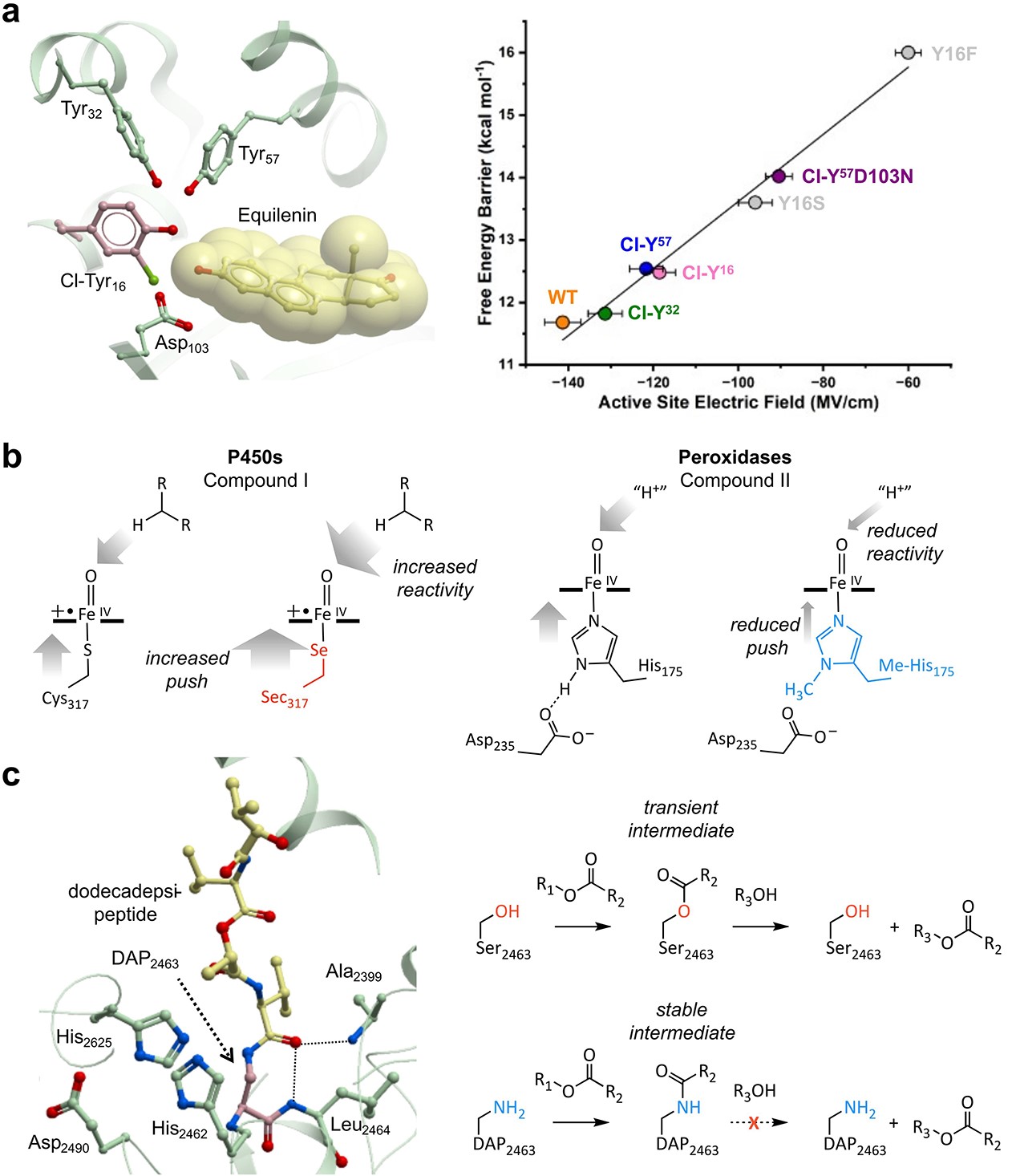 Enzyme design and engineering strategies are typically constrained by the limited size of nature’s genetic alphabet, comprised of only 20 canonical amino acids. In recent years, site-selective incorporation of non-canonical amino acids (ncAAs) via an expanded genetic code has emerged as a powerful ...
Enzyme design and engineering strategies are typically constrained by the limited size of nature’s genetic alphabet, comprised of only 20 canonical amino acids. In recent years, site-selective incorporation of non-canonical amino acids (ncAAs) via an expanded genetic code has emerged as a powerful ...
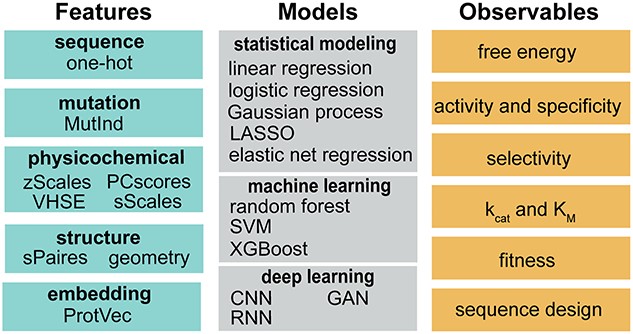 Identifying function-enhancing enzyme variants is a ‘holy grail’ challenge in protein science because it will allow researchers to expand the biocatalytic toolbox for late-stage functionalization of drug-like molecules, environmental degradation of plastics and other pollutants, and medical ...
Identifying function-enhancing enzyme variants is a ‘holy grail’ challenge in protein science because it will allow researchers to expand the biocatalytic toolbox for late-stage functionalization of drug-like molecules, environmental degradation of plastics and other pollutants, and medical ...








